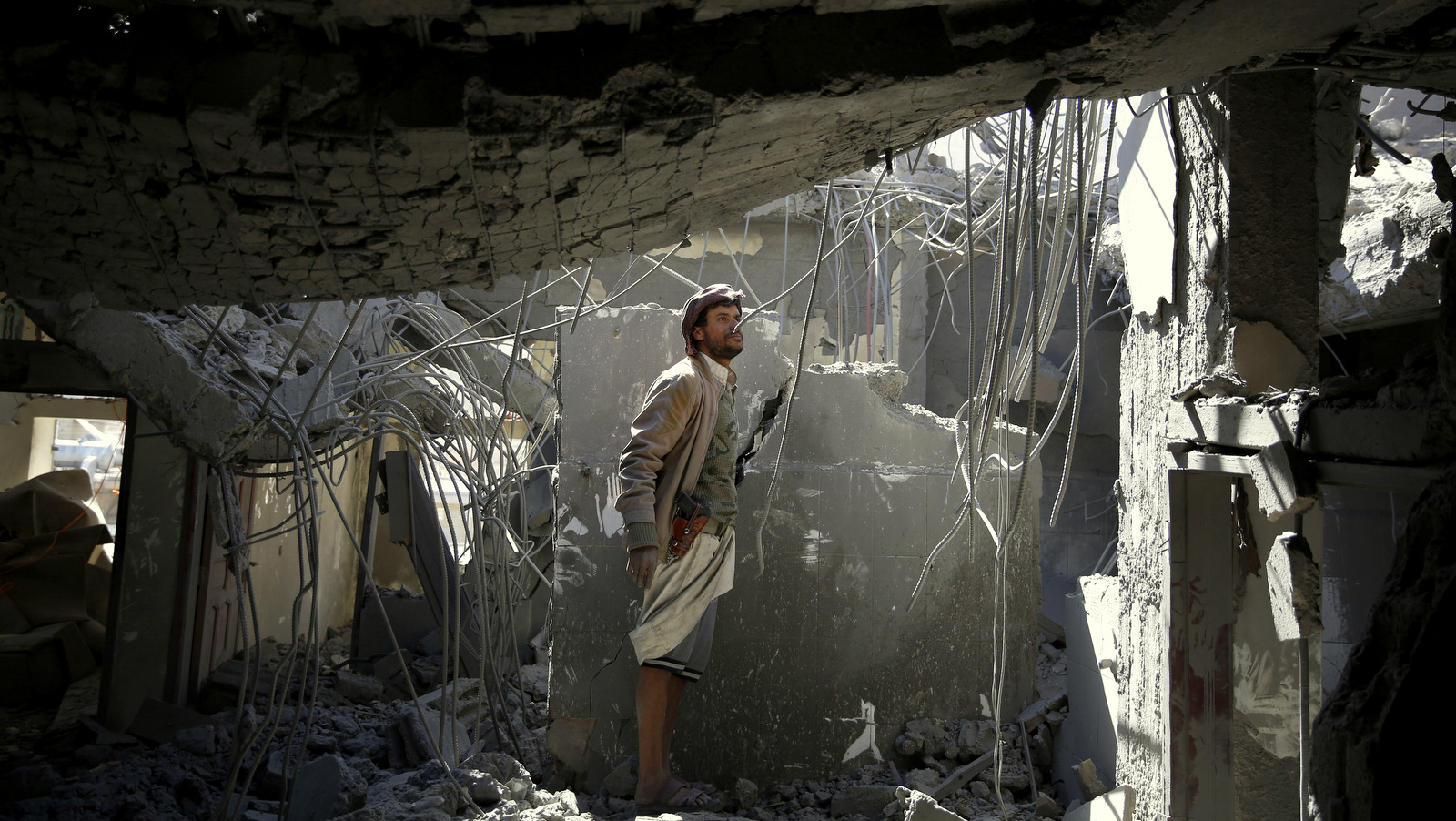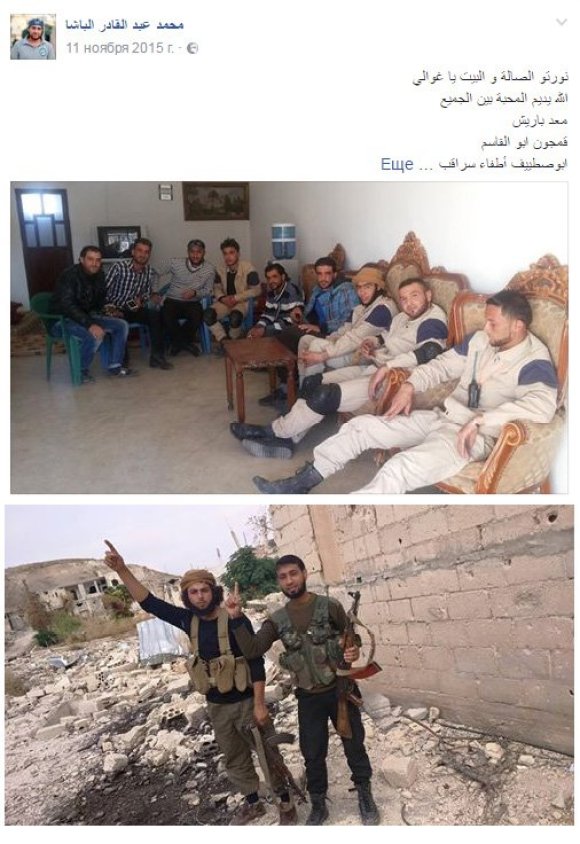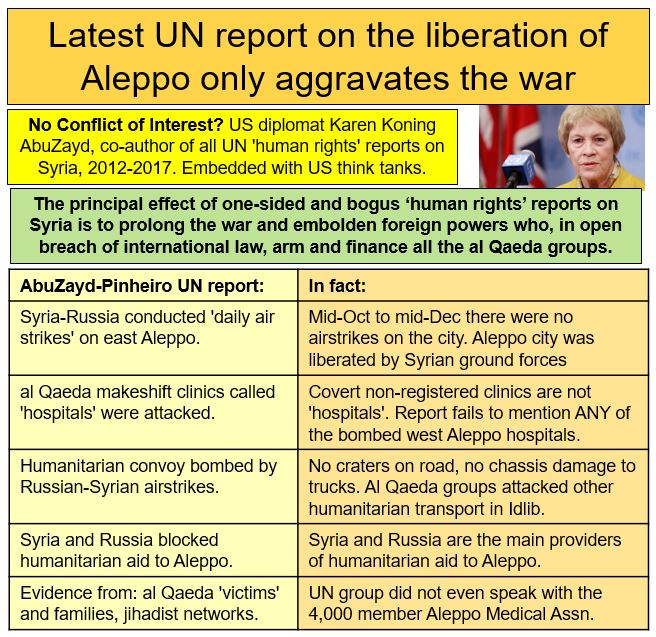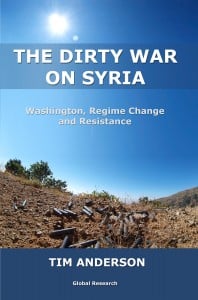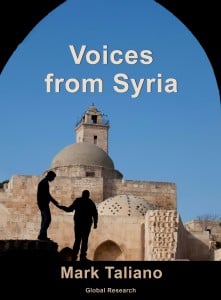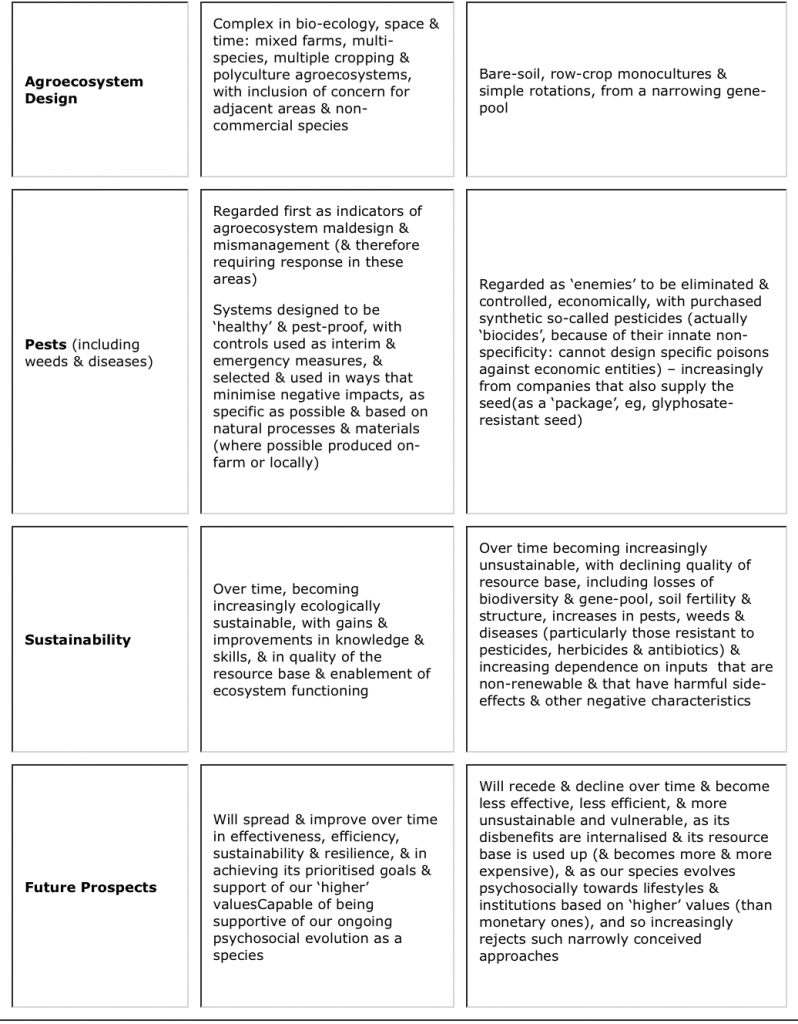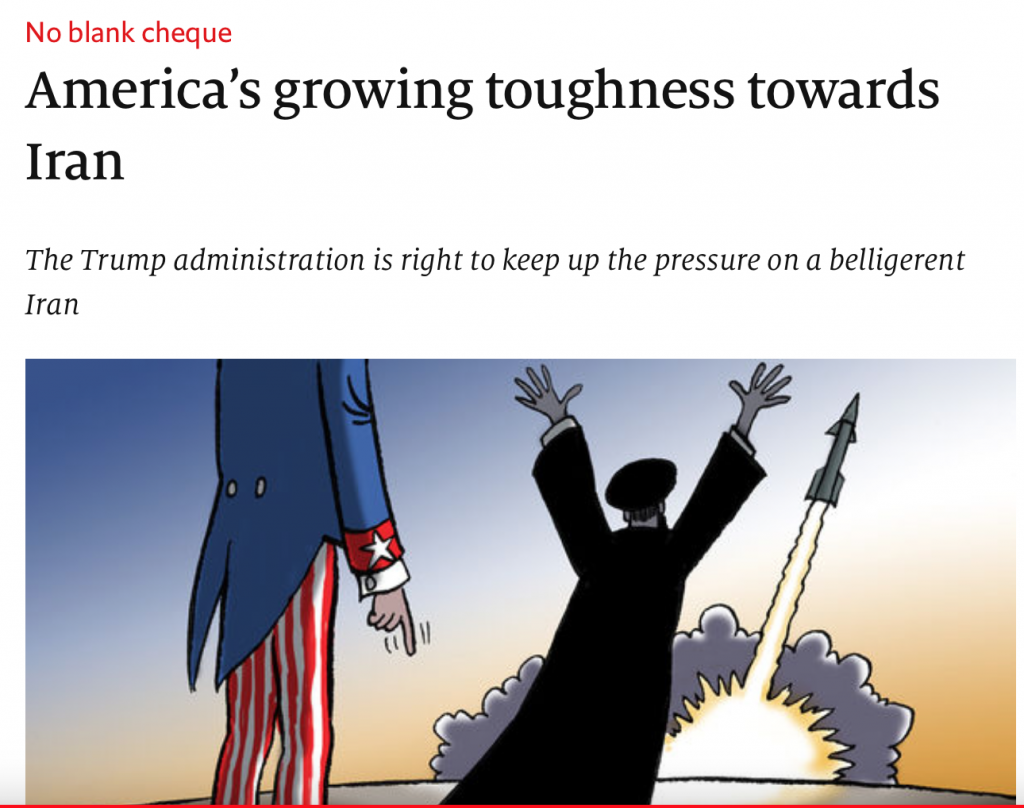1. One hundred and fifty years ago, Karl Marx published his book Capital, an intellectual effort of great breadth, with the aim of revealing the logic of capitalist production and providing workers with theoretical instruments for their liberation. Having discovered the logic of the system, he was able to foresee with great anticipation much of what is happening in the world capitalist economy today. But, we cannot mechanically apply what is outlined in Capital to the current reality of Latin America.
2. As Marx explained in the preface to the first edition, the goal of his research was not to study a concrete social formation; England was only taken as an illustrative example of the most advanced concrete expression of capitalist production at that time.
3. Marx’s major intellectual effort was directed to studying “the capitalist mode of production and the forms of intercourse that correspond to it,” in order “to lay bare the economic law of motion of modern society.” That is why “it is not a question of the higher or lower degree of development of the social antagonisms that springs out from the natural laws of capitalist production. It is a question of these laws themselves […].”
4. We must be able to distinguish between the study of the capitalist mode of production, a theoretical abstract object, and the concrete historical study of a social formation and the study of the class struggles within it. Not keeping in mind these different levels of abstraction and applying Marx’s concepts mechanically as if reality has not changed over the last 150 years, led many of our Latin American Marxist intellectuals and activists to try to insert our reality in the classic concepts, thereby preventing them from understanding the new phenomena occurring in our region outside those parameters.
5. The object of this paper is to look at these new phenomena and to carry out some reflections on what has happened in our region in the last decades, looking at the ways they approach and differ from what Marx outlined in Capital.
I. Latin America: Pioneer in the Rejection of Neoliberalism
6. Today, when there is a growing rejection of neoliberalism in the world, we should remember that Latin America was the first region to implement neoliberal policies. Chile, my country, was used as a testing ground for neoliberal policies before Prime Minister Margaret Thatcher’s government implemented them in the United Kingdom. But it was also the first region in the world after the collapse of socialism in Eastern Europe and the USSR, that gradually came to reject these policies that only served to increase poverty, aggravate social inequalities, destroy the environment, and weaken working class and popular movements in general.
Horrors of neoliberalism
7. Our situation in the 1980s and 1990s was in some way comparable to that experienced by pre-revolutionary Russia in the beginning of the twentieth century. What the imperialist war and its horrors were for Russia, neoliberalism and its horrors was for Latin America. In these circumstances, our peoples said “Enough!” and began to struggle, resisting at first, and then going on the offensive, making possible the victory of left-wing presidential candidates with anti-neoliberal programs in our region.
Popular movements: the main protagonists. The labour movement: the great absentee
8. We can say that in each and every country, albeit in different ways, popular movements, and not political parties, were at the forefront of the struggle, especially rural and indigenous movements. The disastrous effects of neoliberalism led them in many cases to shift their focus from isolated issues to national matters, which not only enriched their struggles and demands but also enabled them to call on support from highly diverse social sectors, all of them negatively affected by that same system.
* Hit by neoliberal measures
9. Missing in much of the Latin American political scene, was the traditional workers’ movement.
10. This was due in great measure to the implementation of neoliberal economic measures such as precarious labour conditions and subcontracting and its strategy of social fragmentation that divided the working class internally.[1] Nevertheless we cannot deny that ideological differences and the personalism of their leadership also contributed.
* Domestication through debt
11. Another form of weakening the working class has been the promotion of consumerism. In making the superfluous a necessity[2](something intrinsic to capitalist development, as Marx points out in Capital) and in promoting credit loan, a new “mechanism of domestication” was created.[3]
12. As Tomas Moulián, a Chilean sociologist, says, “indebtedness” worsens the panic of losing employment and is therefore an important “factor of social demobilization.”[4]
A mechanical application of the structure of classes in Capital
13. The critical emphasis placed on the industrial working class led Marxists to pay no attention to the specific characteristics of the continent’s revolutionary social subject, ignoring the reflections that had been carried out in this respect by Latin American thinkers such as Jose Mariátegui and Haya de la Torre. For many years we were not able to perceive the role that indigenous people and Christians can play in revolutions in Latin America.
14. We applied, in a very mechanical way, the categories of classes employed by Marx in Capital to our reality in Latin America, not knowing about his later analyses regarding Russia’s situation, where he could verify the important role played by peasants in a country where the industrial working class was a minority.
A wider concept of the revolutionary subject
15. It was the Salvadoran guerrilla’s commandant, Schafik Jorge Handal, general secretary of Communist Party of that country, who indicated in the ’80s that the industrial working class couldn’t be considered the only revolutionary social sector, that new social sectors should also be considered revolutionary subjects.
II. Actual Correlation of Forces
Changes in Latin America’s political landscape
16. We all know Latin America’s political landscape has been radically altered since Hugo Chávez was elected in 1998. Within a few years, progressive or left candidates were elected in most of the region’s countries.
17. A new correlation of forces has been established that makes it more difficult for the United States to achieve its objectives in the region.
18. But, as could be expected, the U.S. government has never ceased in its intents to stop the advance of our processes, intents that have achieved some important temporary successes in this last few years. Taking advantage of the big economic difficulties arising because of the world crisis of capitalism, and especially the drop in the prices of our raw materials, ultra neoliberal rulers had been installed in Argentina and Brazil and they are trying to block the advances of the Bolivarian revolution. Nobody can deny that the correlation of forces today is not as favourable as it was a few years ago. [Ed.: see Bullet No. 1293.]
Alternative
19. In our region, we have governments of a very different type. A minority defend neoliberalism, but it is a minority with significant economic and political weight. The majority are progressive or leftist that are looking for alternative solutions to this system.
20. These last governments, even though very different from each other, have at least four identical planks in their platforms: the struggles for social equality, for political democratization, for national sovereignty, and for regional integration.
21. We can divide them into governments that, without breaking with neoliberal policies, emphasize social issues (until recently Brazil and Argentina), and those governments that are trying to break with neoliberal policies using the support of popular mobilization (Venezuela, Bolivia, Ecuador).
III. Chávez’s Role
Courage
22. It was Hugo Chávez who had the courage to call this alternative to capitalism – socialism, in spite of its negative connotations. He called it Twenty-First Century Socialism, adding the adjective twenty-first century to differentiate this new socialism from the errors and deviations that occurred in implementing twentieth-century socialism. This new socialism should not fall into “the errors of the past” and commit the same “Stalinist deviations” whereby the party became bureaucratized and ended up eliminating popular protagonism.
Popular protagonism
23. The need for popular protagonism was a recurring theme in the Venezuelan president’s speeches and was an element that distinguished his proposals for democratic socialism from others where the state solves problems and the people are accustomed to receiving benefits like a gift.
24. He was convinced that socialism could not be decreed from above; that it was necessary to build it with the people. And, like Marx, he understood that protagonistic participation is what allows human beings to grow and achieve self-confidence, to develop themselves as human beings and build a new life.
Kropotkin
25. I always remember the first “Theoretical Aló Presidente,” broadcast on television and radio on June 11, 2009, where he quoted at length from a letter that Peter Kropotkin – the Russian anarchist – wrote to Lenin on March 4, 1920.
“Without the participation of local forces, without an organization from below of the peasants and workers themselves, it is impossible to build a new life.
“It would seem that the Soviets were going to fulfill precisely this function of creating an organization from below. But Russia has already become a Soviet Republic in name only. The party’s influence over people has already destroyed the influence and constructive energy of this promising institution – the Soviets.”[5]
Chávez coined the term “twenty-first century socialism”
26. We can say, without a doubt, that Chávez was the person who coined the phrase “Twenty-First Century Socialism.” I say he “coined” it in the sense that he was responsible for popularizing the name, because some authors had already used it, for example, the Chilean sociologist, Tomas Moulián, in his book Twenty-First Century Socialism: The Fifth Way, which was published in 2000.
27. Conscious of the negative baggage that came with the term, the Bolivarian leader decided to explain to his people, via numerous public interventions, all the benefits that this new society would bring them, contrasting this with the situation created by capitalism. His pedagogical efforts were so successful that, according to polls before Chávez’s death, more than half of the Venezuelan population preferred socialism to capitalism.
What to understand about twenty-first century socialism
28. When we use the term Twenty-First Century Socialism we are thinking of a humanist and solidarian society, with full popular protagonism. A society that applies an ecologically sustainable model of development. A model that satisfies in an equal way the population’s true necessities and not the artificial necessities created by capitalism in its campaign to obtain more profit. A society in which the organized people decide what, how much and how to produce.
29. As we will see later on, many of these ideas recover Marx’s original thought, synthetically expressed in some lines of Capital and expanded in later works.
30. Chávez was not naive, as some might think. He knew that the forces opposed to this project were tremendously powerful. However, being a realist does not mean one must accept the conservative vision of politics that sees it as simply the art of the possible. For Chávez, the art of politics was to make the impossible possible, not by sheer willpower, but by taking the existing reality as one’s starting point and working to build favourable conditions and a correlation of social forces capable of changing that reality. He knew that to make possible in the future what today appears impossible required changing the correlation of forces at both the national and the international level. While in government, he worked masterfully to achieve this, understanding that to build political power, agreements among top leaders were not enough. The most important task was building up social forces.
31. The Venezuelan leader understood that an alternative society to capitalism simultaneously required an alternative globalization to neoliberal globalization. He never sought to build socialism in one country. Chávez was completely clear that this was not possible, which is why he put such an emphasis on shifting the correlation of forces at both the regional and international level.
IV. A Transition Starting with the Conquest of Government
Transition in advanced countries
32. The most common interpretation of Marxism up until the Russian Revolution maintained that socialism would start with the more advanced countries, where capitalism itself had created the material and cultural conditions for it, as Marx himself outlined in Capital: the concentration of capital every day into fewer and fewer hands contrasts with the ever greater “socialization of labour,” the huge development of the productive forces, “the conscious technical application of science, the planned exploitation of the soil,” “the entanglement of all peoples in the net of the world market, and, with this, the growth of the international character of the capitalist regime,” “a [working] class constantly increasing in numbers, and trained, united and organized by the very mechanism of the capital process of production,” a growing contradiction between productive forces / relations of production, collective work.[6]
33. This situation should lead, according to Marx, to a revolutionary conquest of state power that was thought to be the sine qua non that would make it possible to expropriate the expropriators, arriving at “cooperation and possession in common of the land and the means of production produced by labour itself.”[7]
34. This idea of transition – which never actually took place – has been used as an argument against Marx, but this only reflects that those who raise this issue have not read his later writings, in which he modified his initial vision and began to focus much more on the political, rather than economic, conditions for revolution.
35. In his September 27, 1877 letter to Friedrich Adolph Sorge, Marx maintained: “This time the revolution will begin in the East.” Why did he say this? Due to the political situation he could see brewing in Russia at the time, everything seemed to indicate that a war between Russia and Turkey would break out, and that the Russian government would be defeated, with grave economic and political consequences flowing out of this defeat.[8]
36. But Marx not only foresaw the possibility of political revolution in a backward country; he also saw the possibilities arising out of the tradition of collective property in the countryside, which could provide the basis for a transition from the commune to socialism that bypassed a period of capitalist agriculture.[9]
Transition in underdeveloped countries
37. History demonstrated that Marx was right. The construction of socialism did not begin in advanced capitalist countries that had a large and experienced industrial working class but in countries where capitalist development was only just beginning, whose population was predominantly peasant, and whose working class was a minority of the population.
38. Why did it happen like that? Because political conditions out-stripped economic conditions.
39. The outcome of the February 1917 Russian Revolution was considered by Lenin to be “the first stage of the first of the proletarian revolutions which are the inevitable result of war.” According to Lenin, it was the horrors of the imperialist war that led to these proletarian insurrections and these evils could only be cured if the proletariat took power in Russia and adopted measures that, even if not yet socialist, were steps toward socialism.
40. And, as I already said, something like this happened in Latin America.
The institutional road to socialism: a difficult transition
41. In Latin America the transition process is occurring under very different social conditions to those imagined by Marx in Capital and – even though there are some similarities – very different to those of the Russian revolution.
42. Chávez perceived early on the particularities of this transition process that he initiated in his country, and which was to become a precursor of similar processes in other countries in Latin America. Among them, that they had only been able to conquer government and not all state power, and that because of this the process of transition would begin with an inherited state apparatus with characteristics that were functional to the capitalist system, not the advancement of socialism.
43. Nevertheless, practice has demonstrated that – contrary to the theoretical dogmatism of some sectors of the radical left – you can use this inherited state and transform it into an instrument that collaborates with building the new society.
44. But this is only possible if two conditions are met. First, state institutions run by revolutionary cadres willing to adopt measures to transform these institutions. Second, an organized popular movement able to control its actions and to press for that transformation.
Changing the rules of the game
45. But we must be clear that this does not mean we can simply limit ourselves to using the inherited state. It is necessary to build the foundations of a new institutional body and of a new political system.
46. And a first step for achieving this goal is changing the rules of the institutional game. Therein lies the importance of the constituent processes that occurred in Venezuela, Ecuador and Bolivia and enshrined those new rules in new constitutions.
47. I am convinced that it is not possible to build socialism via the peaceful road without carrying out a constituent process. But this does not mean that we can deal with this issue in a voluntaristic manner. It only makes sense to promote a process of this type once revolutionary forces believe they can obtain the electoral support required to ensure the approval of the necessary changes. It makes no sense to promote a constituent process if the end result is the approval of a new institutional framework that will act as an obstacle to change.
48. This was precisely why the Popular Unity (UP) in Chile decided against convoking a constituent assembly: they were unsure they could win. But I have always wondered, what would have happened if we had pushed our forces to the limit and gone door-to-door promoting this issue? It is important to remember that when the opposition in Venezuela proposed a recall referendum as a means to remove Chávez from power, the polls indicated they had a majority, and that there was a real risk that the vote against Chávez would win. Nevertheless, Chávez decided to accept the challenge and campaigned hard to build a correlation of forces capable of ensuring his victory.
49. That is why I have asked myself, what are the possibilities for converting the generalized discontent that exists among Chileans today toward the current institutional framework – something the youth of my country have so brilliantly exposed with their struggles – into a demand for a constituent assembly that no politician could oppose, if we were to tap into this discontent by carrying out a consciousness-raising campaign on this issue, going door-to-door, classroom to classroom, workplace to workplace?
Create new institutions (missions)
50. Apart from changing the rules of the institutional game, it is necessary to look for unexplored roads to confront the inherited bureaucratic apparatus. To provide medical assistance to the most neglected sectors, Chávez decided to create institutions to run programs outside of the old state apparatus. This was the objective of the different social missions created by the government: health, education, distribution of essential products on lower prices, etc.
51. For example, the Ministry of Health’s bureaucratic apparatus was not able to respond to the healthcare demands of the very poor who lived in far away places or areas that are hard to get to, such as the poor neighbourhoods located on hillsides in Caracas, small rural towns, etc.
52. Where did that inability come from?
53. On one hand, because doctors working in the inherited health system didn’t want to go to these places – they weren’t really interested in providing healthcare; their aim was to make money. Additionally, they were not prepared to provide the type of healthcare that was needed, since they were basically educated as specialists and not as general practitioners.
54. While a new generation of Venezuelan doctors was being educated to meet this demand, the government decided to create Misión Barrio Adentro, building medical clinics in the cerros (hillsides) and barrios (shanty towns) to provide basic healthcare to the poorest people. The government sought the collaboration of Cuban doctors to help them in this endeavour. The Misión has had such positive results and an excellent reception from the Venezuelan people that the opposition is now saying in their electoral campaigns that it will keep the missions but will make them much more efficient.
Transform inherited institutions (the military)
55. The government is not only capable of creating new institutions more suited to the new tasks; it is also capable – up to a point – of transforming the inherited state apparatus, for example, the armed institution.
56. And a factor that can help very much in this sense is a new constitution that enshrines in its articles new ways for organizing society and establishes a new social order that serves the majority of the population, not the elites. Such a constitution can ensure that the natural wealth of a country, previously ceded to transnational companies, returns to state hands. It can ensure the construction of independent and sovereign states in which different forms of popular protagonism are promoted. And as one of the functions of the armed forces is to defend the order of a country, by defending this new order, they will thus be defending the homeland and the interests of the overwhelming majority of the population, not the interests of the elites.
57. That is what happened in Venezuela. The new constitution became an important ally of the process, because defending the constitution means nothing if not defending the changes undertaken by the Chávez government. It was this constitution that allowed the majority of the Venezuelan military to rebel against the coup-supporting officers and decide to disobey the orders of their superiors.
58. For reasons of time I cannot expand here on a series of other measures for transforming important state institutions.
V. Other Important Tasks and the Problems that Emerge
1. Changing the relations of production
59. These governments are capable of going about implementing a coherent strategy toward changing the relations of production, materializing Marx’s idea that the producers of social wealth are the ones who should take their destiny into their own hands.
What to understand by social wealth?
60. But, what do we mean by social wealth?[10] Marx argued there were only two sources of wealth: nature and human labour, this last one being the most decisive. Without its intervention, the potential wealth contained in nature would never be able to become real wealth.[11]
61. Marx noticed that along with “living human labour,” there is also what the author of Capital called “dead labour.” The labour embodied in the tools, machines, improvements made to land, and, of course, intellectual and scientific discoveries that substantially increased social productivity are a legacy passed down from generation to generation; they are a social heritage – a wealth of the people.
62. But who owns this wealth, these social assets? Capitalism, through a process of mystification, has convinced us that the rightful owners of this wealth are the capitalists. Socialism, by contrast, begins by recognizing that wealth incorporating the labour of generations is a social heritage; it does not belong to specific people or specific countries, and because of that must be used in the interests of society as a whole rather than to serve private interests.
63. The question is: how do we ensure this happens? The only way is to de-privatize these resources, transforming them into social property.
From state property to collective property
State property: only a juridical change
64. But, social property is not the same as state property. During the initial phase of socialism, the placement of the principal means of production in state hands represents nothing more than a juridical change of property; the process of labour suffers very few variations. The alienated status of the workers in the production process remains unchanged, the subordination to an external force – the new socialist managers – continues. This is formally collective property, because the state represents society, but real appropriation (ownership) is still not collective.
65. That is why Engels argues:
“State ownership of the productive forces is not the solution of the conflict, but concealed within it are the technical conditions that form the elements of that solution. This solution can only consist in the practical recognition of the social nature of the modern forces of production, and therefore in the harmonizing of the mode of production, appropriation and exchange with the socialized character of the means of production. And this can only come about by society openly and directly taking possession of the productive forces which have outgrown all control, except that of society as a whole.”[12]
66. This is what Marx conceived of as the exercise of a “conscious and planned control.”[13]
Participatory planning: How society takes possession of social wealth
67. These ideas exposed by Marx and Engels were interpreted in twentieth-century socialism as the necessity of a central authority to fix goals and the means by which to reach them, coordinating from above all efforts to build the new society. This led to bureaucratic planning that ignored people’s needs.
68. The process of planning in twenty-first century socialism should have a very different focus. It should be an eminently participatory process where the people in their neighbourhoods and in their work places lead the process.
69. It is here that Pat Devine’s contribution seems important to me. He distinguishes different levels of participation in relation to the different levels of social ownership. Each level is associated with those “affected by decisions over the use of the assets involved, in proportion to the extent to which they are affected.”
70. According to this logic, a bakery that produces bread and sweets for a given geographic area (for example, a commune), whose workers live in that area and whose raw material also comes from nearby farmers within the local area, should be owned by that commune. It makes no sense for that bakery to be owned by the nation as a whole.
71. In contrast, in the case of a strategic sector such as oil, it would be absurd for the oil workforce to claim ownership of a resource that belongs to all inhabitants of the country (or even to humanity as a whole). The surplus that is produced cannot only be dedicated to improve the conditions of their workers’ lives, but rather it should also be dedicated to new investments in the company, to support the development of the communities, and, as a wealth that belongs to the whole nation, a significant part of that surplus should contribute to the national budget. The legal ownership of this enterprise should be in the hands of the state; the effective possession or control of the process of production should be in the hands of the enterprise’s workers; but the destination of the product, once investments and labour remuneration have been deducted, should be defined by society as a whole.
72. I share with Pat Devine the idea that the actors in participatory planning will vary according to the different levels of social ownership. In the case of the community bakery, decisions on how much to produce, with what raw materials, what quality, what variety, when the product should be ready, how to distribute it, how much to invest in maintaining or expanding the enterprise, etc., should be made not only by those who work in the bakery but also by the people who produce the raw material used and by the consumers of bread and sweets in the little town.
73. Although the oil workers should participate in the management of the process of production of their company, decisions concerning reinvestment, new investment, marketing, the destination of the rest of the surplus, etc., must involve the entire society. In both cases, the local society or the national society should be present through its various representatives or spokespersons.
74. I am convinced that the process of participatory planning is an instrument for ensuring that property that has legally passed into the hands of the state (one of the central characteristics of socialism) is transformed into real social property. The modalities will depend on the level of social property.
Strategy for changing the relations of production
75. If we understand that changing the relation of production does not mean simply placing companies into the hands of the state; that it is not simply about a juridical change of property ownership to new owners (the popular state), we will understand that it is not an easy task. To change the relations of production means to change attitudes and ideas[14] and these changes cannot be carried out from one day to the next. It is a complex process that requires time.
76. It is therefore necessary to design a coherent strategy aimed at transforming the existing relations of productions into the new relations that are the hallmark of twenty-first century socialism. The steps to be taken and the speed with which these can be implemented will depend on the starting point and on the existing balance of forces.
77. To explain this more clearly, I have listed below some of the steps that will have to be taken – following the lead of Michael Lebowitz – when dealing with state-owned companies, when dealing with cooperatives, and when dealing with capitalist companies.
State companies
78. It goes without saying that the easiest transition is the one that can take place in state companies, since these are formally owned by society in general and are explicitly directed toward serving the interests of society.
79. In such companies it will be possible to move from formal ownership to real appropriation by:
- creating workers’ council that allow workers to play a part in running the company;
- organizing production to satisfy communal needs;
- opening the books and ensuring complete transparency, thereby allowing workers to exercise a social accounting function and combat waste, corruption, and bureaucratic interest;
- electing managers who share this vision and who have the trust of the workers;
- applying a new type of efficiency in these companies that, as productivity improves, makes it possible for the workers to achieve more and more human development (introducing a workday that includes time for worker education so involvement in management is truly effective and not merely formal), and also respects the environment.
80. According to Michael Lebowitz, it is possible that specific companies that follow this type of social policy may not initially be profitable, but because these policies can be thought of as social investment, all of society should cover their costs.
Cooperatives
81. Cooperatives must be encouraged to overcome their narrow focus on the interests of the group that makes up the cooperative. How can this be achieved? One way to do it is to develop organic links with the rest of society.
82. In order to do this it is important to encourage:
- forging links between cooperatives so they relate to each other in a cooperative and not a competitive way. In some cases it might be possible to integrate their activities directly without them being separated by commercial operations, and
- forging relations between cooperatives and the communities. This is the best way to begin to move away from the private interests of each cooperative and focus on the interests and needs of people in general.
Capitalist companies
83. It may be possible to gradually transform capitalist companies by finding various ways to subordinate their economic activity to the interests of the national economic plan. Michael Lebowitz has called this “socialist conditionality.”
84. These measures could include:
- demanding transparency and open books so communities and workers can inspect them;
- using a system of prices and taxes that obliges companies to transfer a portion of their surpluses to other sectors of the economy, thus making it possible to set up new companies or to improve social services for the population;
- using competition with state companies or subsidized cooperatives to oblige the capitalist companies to lower their prices and reduce their profits;
- using government regulations that require companies to transform the workday so that a given number of hours is set aside for educating workers, and requiring them to implement specific ways for workers to participate in decision-making about how the company will be run.
85. But why would capitalist companies accept such impositions if they can move to other parts of the world where these costs do not exist? They might be willing to do so if the owners have a strong patriotic consciousness and if the revolutionary government rewards their collaboration with the national development plan by giving them easy credit from state banks and by guaranteeing that state companies or the state itself will purchase their products at prices acceptable to them. That is, the state can use its power to change the rules of the game under which capitalist companies can survive.
86. But if the government’s aim is to begin to move toward a society without exploiters and exploited, why design a strategy to incorporate capitalist companies into the national plan, if they continue to exploit workers?
87. The reason is very simple: the state is not capable of running all of these companies overnight. It has neither the economic resources nor the managerial experience needed. Nevertheless, we must never lose sight of the fact that capitalist companies placed in this situation are continually going to try to reduce the burden of the aforementioned “socialist conditionality.” At the same time, the revolutionary government, with the cooperation of workers and communities, will try to introduce more and more socialist features into these companies. There will therefore be a process of class struggle in which some will try to recover lost ground by returning to the capitalist past and others will try to continue to replace capitalist logic with a humanist, solidarity-based logic that makes it possible for all human beings to fully develop.
88. In general, we must strive to ensure that ownership of the means of production becomes increasingly social, while also ensuring that small-scale private property is allowed to exist.
2. A development model that respects nature
89. Another important task our governments face is implementing an economic development model that is not based on the indiscriminate exploitation of natural resources – as Marx points out in Capital[15] – but instead seeks to gradually re-establish the necessary harmonic metabolism between humans and nature.
Overcome poverty and respect nature
90. This is far from an easy task. The big dilemma our countries face is how to raise our people out of poverty and attend to their basic needs, while respecting nature. To aim for some kind of “zero growth,” as some propose, and to avoid the consumption of polluting energy and its degrading consequences for the environment, would mean enshrining existing inequalities between rich and poor countries, that is, between developed societies that have reached a high standard of living and the majority of humanity that are a long way from reaching those conditions. It is much easier to ask others to stop growing if one’s own needs are already satisfied.
91. I believe that in order for a fruitful debate to occur on this topic we should accept two facts. The first is that we should begin by recognizing that human beings have had to extract from nature since the dawn of time and that there is every likelihood that they will have to continue doing so, to one degree or another. The problem is not whether or not to extract but how to extract in a way that maintains what Marx termed the healthy metabolism between humankind and nature. The first inhabitants of the planet extracted fruit from trees, fish from the seas, etc., but in those times and in later centuries they extracted from nature in a manner that maintained that healthy metabolism. However, when the capitalist system arose, the profit motive inherent to it led it to prioritize the exploitation of nature to the maximum regardless of the effects its economic activity had on nature, thereby destroying the healthy metabolism that had existed previously. In this context, more and more is extracted, and natural resources are becoming depleted, with all the additional consequences that this behaviour has on climate change.
92. My second point is that in order to be able to initiate a productive debate, I think it is essential to understand that the resources located in a particular territory – minerals, petroleum, gas, aquifer springs, forest reserves – should not be considered resources that belong to the inhabitants of those places. The oil in Venezuela and Ecuador, the gas in Bolivia, and copper in Chile are gifts from heaven. They are resources that belong to society as a whole, so it is society as a whole that should decide whether to extract or not. Of course it is necessary to engage in serious dialogue with those who live in the area to ensure that their concerns are addressed and their needs met to the best of our ability. But they need to understand that interests are at stake in such situations that transcend those of particular communities.
The need for a different kind of development
93. If we can agree on the two previous points, then we need to look at concrete proposals for how to use our natural resources under today’s prevailing circumstances in order to advance, little by little, toward building an economic development model that allows us to re-establish that healthy metabolism between human beings and nature.
94. It is therefore not about saying no to development, but instead “conceiving and making reality genuinely human models of development,” those that satisfy “in an equal way the necessities of their inhabitants without putting in danger the satisfaction of the necessities of the future generations,” a society in which it is the organized people who decide what is produced and how it is produced.
95. In this sense our governments have made advances and taken some significant steps in this regard. Nevertheless, we should recognize that there is still a big gap between the discourse and practical steps taken so far. But, at least, they have demonstrated that there is an intention of advancing in that sense.
96. An important step has been to use extractive resources to tackle poverty. By doing so we are also creating better environmental conditions, because in many cases, poverty is a big contributing factor to environmental degradation. Illegal logging for firewood to use in cooking and to keep warm is one of the clearest examples of this.
Popular participation in the defence of the environment
97. As the challenge is enormous and the temptations are many I find very interesting what the Bolivian constitution proposes in terms of “popular action” against any violation or threat to a series of rights, including among them, those of the environment.[16] It also proposes the creation of a tribunal dedicated exclusively to agro-environmental issues.[17] Authorities to this tribunal were elected by the people in unprecedented elections held in October 2011.
3. Government actions should always consider the double product of every human activity
Transforming nature and transforming oneself
98. We have said that one of the fundamental characteristics of twenty-first century socialism is that it cannot be decreed from above but rather it has to be built by the people.
99. Again here we find Marx’s original thought. He affirmed that not only does labour transform nature but, at the same time, it transforms the person that executes that labour.[18] Whereas the worker is alienated and crushed in the case of capitalism,[19] the society of associate producers will allow a higher form of society, a society in which “the full and free development of every individual [is] the ruling principle.”[20]
100. Michael Lebowitz has widely explored this idea in a number of his books dedicated to the issue of twenty-first century socialism. He has identified the relationship between human development and revolutionary practice as the “key link” in Marx. According to him[21] every human activity has two products: “both the change in the object of labour and the change in the labourer herself.”[22]
101. Sharing his perspectives, I prefer to speak of a material, objective product (the object produced), and a subjective or human product (the change in the person that carries out that work or that practice).
102. Given I previously referred to the very important role participatory planning plays in the construction of socialism, I wanted to use this example to illustrate the idea of the double product. When the inhabitants of a community design their community plan, this activity results in a double product. The first product is the plan itself, which is an objective, material product that has been elaborated in a participatory manner and is tangible in the sense that it is there for all to see. The second is a subjective, spiritual product that is much less tangible and can only be seen through discerning eyes. It is the transformation of the people, their growth as human beings, which occurs as a result of their involvement in this process.
103. This is an educational process in which those that participate learn to enquire about the causes of things, to respect the opinion of others, to understand that the problems they face are not exclusive to their street or neighborhood but are related to the overall situation of the economy, the national social situation, and even the international situation. They learn that everyone’s problems and every community’s problems should be examined within the context of the reality that other people and other communities face, which may be much more difficult and urgent than theirs. Through this, new relations of solidarity and complementarity are created that place an emphasis on the collective rather than the individual.
104. All this means that those who participate in this process are politicized, in the broader sense of the term, and develop an independent mind that can no longer be manipulated by a media that remains overwhelmingly in the hands of the opposition.
105. When people become involved in the planning process, they grow as human beings; it gives them dignity, it increases their self-esteem and broadens their knowledge on political, cultural, social, economic and environmental issues. And most importantly, they no longer feel like beggars demanding solutions from the state. They become the creators of their own destiny and the destiny of their communities.
106. This subjective product is what the technocrats never keep in mind. They prefer perfect documents to those of smaller quality but that have the merit of having been made by the people.
107. I believe that after this explanation we can better understand why popular participation plays such a central role in twenty-first century socialism. Participation, protagonism in all spaces, is what allows people to grow, to win self-confidence, that is, to achieve full human development.
108. I find it interesting to note that the Bolivarian constitution (draft via a Constituent Assembly and approved in a referendum in 1999) is probably the only one of its kind in terms of drawing a direct relationship between protagonism and integral human development, both individual and collective.
109. How different would the current situation in Latin America be if our progressive governments had always had in their mind, in the different actions they have adopted, this idea of the double product; if instead of solving problems from above, they appealed to the participation of the people to solve them!
110. Unfortunately, many times technocratic vision has dominated: “If the top cadres have clear and right ideas, why lose time in discussions with the people, what matters is quick solutions.” They have never considered the subjective, human result obtained when they execute such actions. They have realized too late that without the participation of the people many measures have not achieved the prospective effectiveness and, what is worse, they have not prepared the people to defend the conquests; they have not created the capabilities for fighting new successful battles.
111. To conclude, Marx’s purpose in Capital – published 150 years ago – was to widely expose the logic in which the capitalist mode of production functions. He did so after dedicating years to investigating what was happening in the more advanced capitalist countries. But, as we know, he recognized a difference between the Western European path and the Russian path. Our purpose, as Latin American revolutionary activists, should be to develop a Latin American path for the construction of socialism, looking for solutions without the blinders of dogmatic Marxism.
112. Even though the objectives we intend to reach are identical to those briefly outlined by Marx in Capital, especially the one about seeking full human development, this, without a doubt, requires an original path. We are obliged, as Simón Rodríguez says, “to invent in order not to commit errors.” But to build a solid economic base that allows us to realize that full human development, we should also keep in mind the logic of the capitalist mode of production and its effects on the current world, as described by Marx in his masterpiece.
